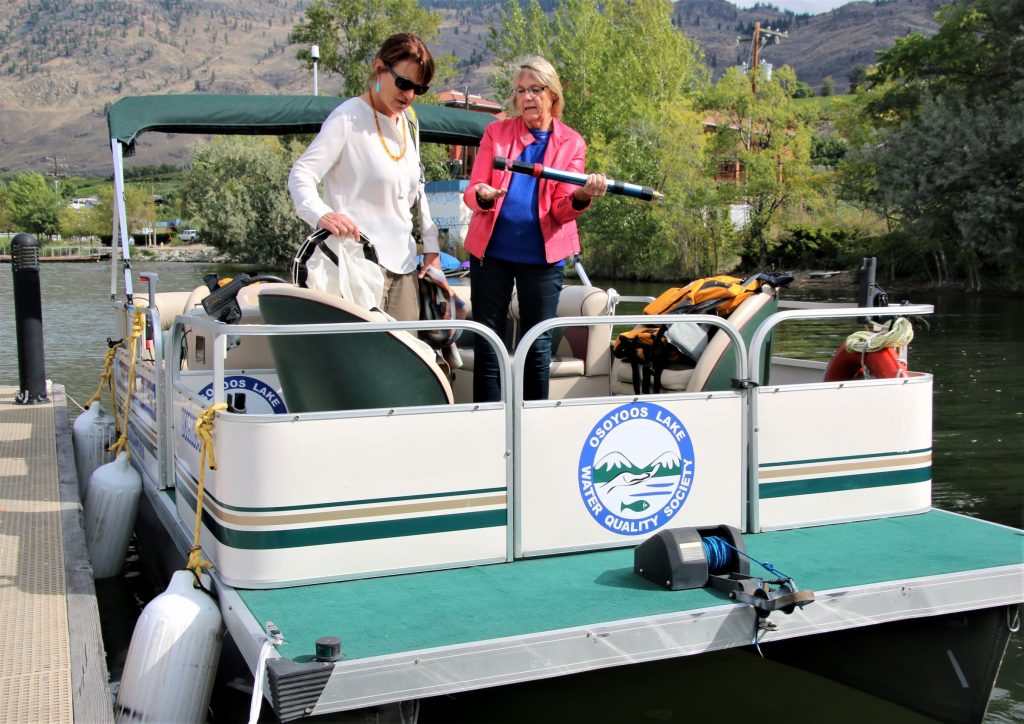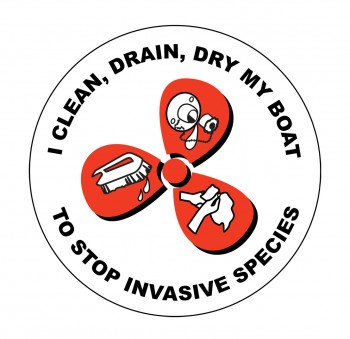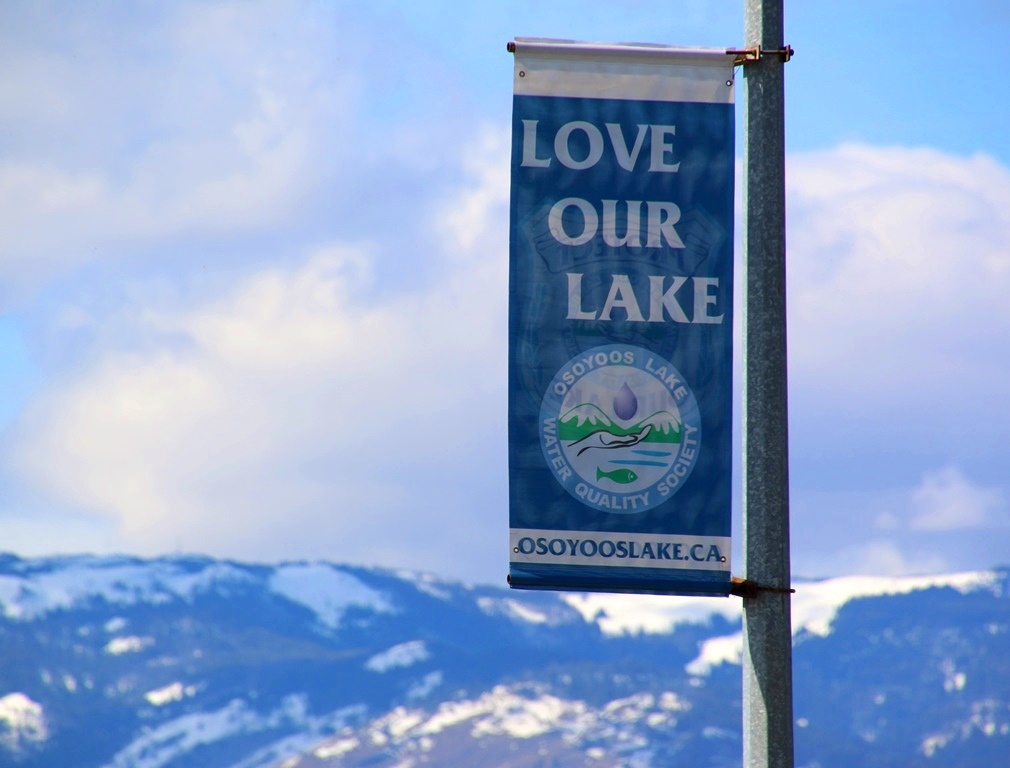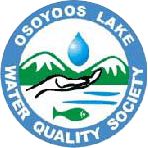OLWQS and its role in protecting the integrity of Osoyoos Lake
Partial remarks from OLWQS President, Birgit Arnstein at a Rotary Club of Osoyoos meeting in November, 2019
“The mandate of the Osoyoos Lake Water Quality Society (OLWQS), a totally volunteer driven organization, is to protect Osoyoos Lake through various public education initiatives along with monitoring the quality of the lake’s water,” explains the Society’s President Birgit Arnstein.
“Some of our concerns for the lake are the introduction of harmful chemicals, garbage etc. into the lake, shoreline damage from wakes created by high-powered boats and of course the introduction of aquatic invasive species.”
“We continue to test the lake for pH, temperature, specific conductance, dissolved oxygen and water clarity at varying depts in five areas of the lake.
Last year, we also tested for calcium levels of the lake along with collecting water samples to look for veligers (larval forms of zebra and quagga mussels).
Water Data Collection for Government

The Ministry of Environment and Climate Change the government body we send our data and water samples, decided that it was not necessary for us to continue the calcium testing this year. However, they gave us some new sites to collect lake samples. We had to learn how to collect horizontal tow samples along with our traditional vertical tow samples. We continue to collaborate with OASISS (Okanagan and Similkameen Invasive Species Society) with our invasive mussel testing program.”
Arnstein adds. “Last year we purchased a new and more accurate testing device called the Hydrolab-4, which is connected to a computer on board for real time data collection. We had also started using a plankton net. These are complicated activities and demand that our volunteers be well versed in their use.
Volunteer Training
This spring, we held three training sessions for new and returning research volunteers. We are very fortunate to have John Gates as our data manager. He’s developed detailed training materials that help us to manage the large amount of data we collect and forward to the Ministry.”
“We are also fortunate to have volunteers with a variety of skills from boat captains, to computer operators, explains Arnstein. “We welcome new members and volunteers to help us out – Lake monitoring is also an interesting way to get out onto the lake, learning new skills and meet a number of interesting local people.”
Local financial support for upgraded research boat
“Thanks to the generous support of many local and regional organizations, in May, 2019, we purchased a used aluminum pontoon research boat and trailer as well as a new motor and new personal flotation devices that must be used by all passengers.”
“The process of getting our new boat ready was a long one, however, we learned many valuable lessons along the way.”
“Ultimately, the bottom line is that we love our new updated research watercraft that has comfortable seating, and a smoother, faster ride from one testing site to another. It also has a built-in computer table with protection from the sun’s bright rays and a bimini to keep our volunteers cool on those hot summer days.”
Fundraising, Grant Applications, Volunteer Recruiting & Training and Networking
“2019 has been busy with fundraising, grant writing, volunteer recruiting and training.
For our AGM, we brought in Invasive Species expert, Lisa Scott Executive Director, OASISS.”
“As well, we have attended various conferences and meetings to network and update our knowledge base, including the BC Lake Stewardship Society annual conference.
I was impressed to learn that there are both large and small groups throughout this province doing various things to protect BC lakes. People were there from Charley Lake, Prince George, Vancouver Island, the Kootenays and various points in between.”
“I am proud to state the OLWQS is among of the most organized and in my opinion doing far more than many similar groups in BC. That makes sense as we are guardians of one of the most ‘at risk’ lakes for invasive aquatic species. We are also a cross-border (Canada/USA) lake with a large amount of motorized watercraft activity.”
“Some of the topics discussed at the BC Lake Stewardship Society conference involved flooding in the Okanagan; community-based water monitoring and the impact of large powerboats.
Climate Change, Boat Dealerships and Invasive Species
Keynote speaker, Dr. Ken Ashley gave a sobering talk on the effects of Climate Change on lakes and fisheries. The two-day conference left me overwhelmed with ideas and armed with new information. It also confirmed my belief that the activities of large and small volunteer groups (like OLWQS) are instrumental in monitoring and protecting our delicate BC lakes and waterways.”
“I was also fortunate to attend an Invasive Mussel Prevention workshop this fall. As you may be aware, invasive mussels have been found in California, Arizona, Nevada, Colorado, Utah and of course the great lakes, among many others.
I found the information for boat dealerships to be eye opening. Many boats are built in California, and once a boat has been built it must be tested either in a special deep pool or in a nearby lake.
Lakes where these new boats are tested is crucial. The boats are then ‘shipped’ to Canada and must have accurate documentation as to how and where they were tested. The Boat dealers present were notably surprised by some of this information. They knew little about invasive mussels. For me, this lack of knowledge is extremely concerning.”
“Accurate record keeping and thorough inspections are essential to keep invasive mussels out of British Columbia. Our Canadian and USA Border guards play a key role in protecting our lakes. If you have gone through the border in the summer months, you may have seen the inspectors with the Invasive Mussel Defense Program and their trailer with a water tank.
We were given a demonstration of the decontamination of a boat. I have photos and videos of the procedure which are being edited and put into a comprehensive format by Andrew Stuckey, one of our Board of Directors. We will share those procedures when completed.”
“Kilo, one of the two new sniffer dogs in the Okanagan (for invasive species) was also at the demonstration. We observed him finding some sample mussels. Boats are visually checked, a complete history (where is the boat from? how long has it been out of the water? and, is the drain plug open?) are all part of the inspection. High pressure water at 60C is sprayed throughout the boat and motor. A boat must be out of water for a minim of 30 days to ensure that mussels and mussel larvae are dead.
Clean, Drain & Dry watercraft protocols

“Clean, Drain and Dry of all watercraft remains the best protection for our lakes – please spread the word to everyone you know. Public awareness is key! Some other activities proposed to protect BC waterbodies include: An updated data base of boat manufacturers so that all new and used boat dealerships can be educated; more boat inspection sites; longer hours of operation; adding more sniffer dogs, and instituting a passport system between Alberta and B.C. to keep track of where boats are going to and coming from.”
“Scientists are researching methods to eradicate invasive mussels in a lake – one method, liquid potash has been tried as has ziquinox (a dead bacteria) but none of these initiatives have been proven to be successful so far.
Remember that one female invasive mussel will reproduce one million offspring in a year – the breeding season is from June to September. Having mussels in our lake would have an enormous negative financial impact on our community – $43 million annually is a conservative estimate for the Okanagan basin. Prevention is still the best defense, and spreading the word that everyone must Clean, Drain & Dry their watercraft. We ask all of you to spread the word, not the mussels – tell your family, neighbours, friends!”
“OLWQS also educates communities with public talks, pole banners, trash can decals, yellow fish on storm drains — all designed to remind people that we all have a responsibility to do our part to protect our BC lakes.
Our faded Street Light Pole Banners must be replaced (you can see them in front of Town Hall and along the bridge and hotel row). The cost of replacing these banners is close to $3,000. This in conjunction with the annual maintenance cost for our Hydrolab-4 and its insurance $1,600 will require ongoing fundraising activities such as our annual Burger & Beer event in February.”


